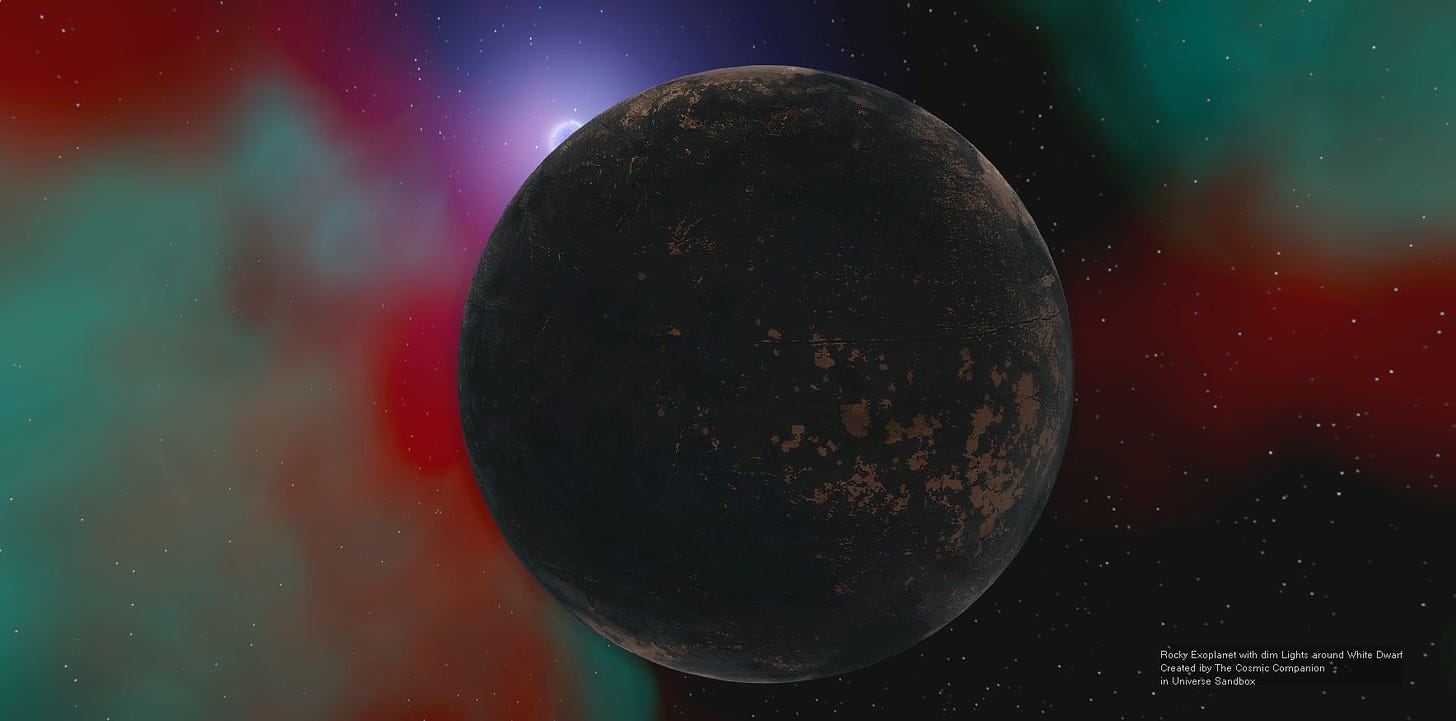Could Life Survive the Death of a Star? Astronomy News with The Cosmic Companion
Could life survive, or even thrive, on worlds orbiting dead stars? A new generation of instruments may be able to find these cosmic survivors.
A new generation of telescopes could soon allow astronomers to examine worlds orbiting dead stars for signs of life.
By James Maynard

Worlds orbiting white dwarf stars would have experienced several catastrophes as their sun died. But, could life on these worlds survive, or even flourish, through these series of calamities? A new generation of instruments aims to find out. Image credit: The Cosmic Companion / Created in Universe Sandbox
Planets orbiting white dwarfs should be dead — at least one star in their system ran out of fuel and collapsed before expanding back outward, swallowing any nearby worlds. Afterwards, the dying star collapsed again, squeezing the star — as massive as the Sun — down to the size of Earth.
A new generation of telescopes, soon to come on line both on the ground and in space, will allow astronomers to investigate the atmospheres of alien worlds.
The Extremely Large Telescope (ELT) in Chile will provide astronomers with unprecedented views from the ground over visible and near-infrared frequencies. The telescope will be, by far, the largest telescope in the world, gathering 13 times as much light as the second-largest instrument.
The James Webb Space Telescope (JWST), due to launch in 2021, is often called a successor to Hubble, and it will extend the work of the three-decade-old observatory, looking primarily at infrared wavelengths of light.
Both observatories, and other instruments, will be able to study the atmosphere of distant worlds around other stars.
Read more: https://bit.ly/Can-Life-Survive-Death-Star
Thanks for subscribing!



As part of the Proposal writing for the NASA Viking Mars Lander Life Detection program in 1968, we at OSU COAS had been studying Cryophylic Algae and their resting spores. The spores form when the algae encounter conditions outside their tollerance(>1C,<-0.1C, no liquid water)and are quite able to withstand interplanetary conditions for as long as we were able to test them>30 days...(our 1000w UV source was borrowed and he wanted it back!).
On exposure to the proper nutrient mix they never refused to bloom no matter what we did.
So even though active photosynthesis is absent, the resting spores can (and we found did) survive for up to 125 years
Based in algae smears cultured from historical Antarctic ship captains log books that old.... life does not have to be active, potential must be considered as well.
Peter Becker Ph.D.
Polar Oceanographer